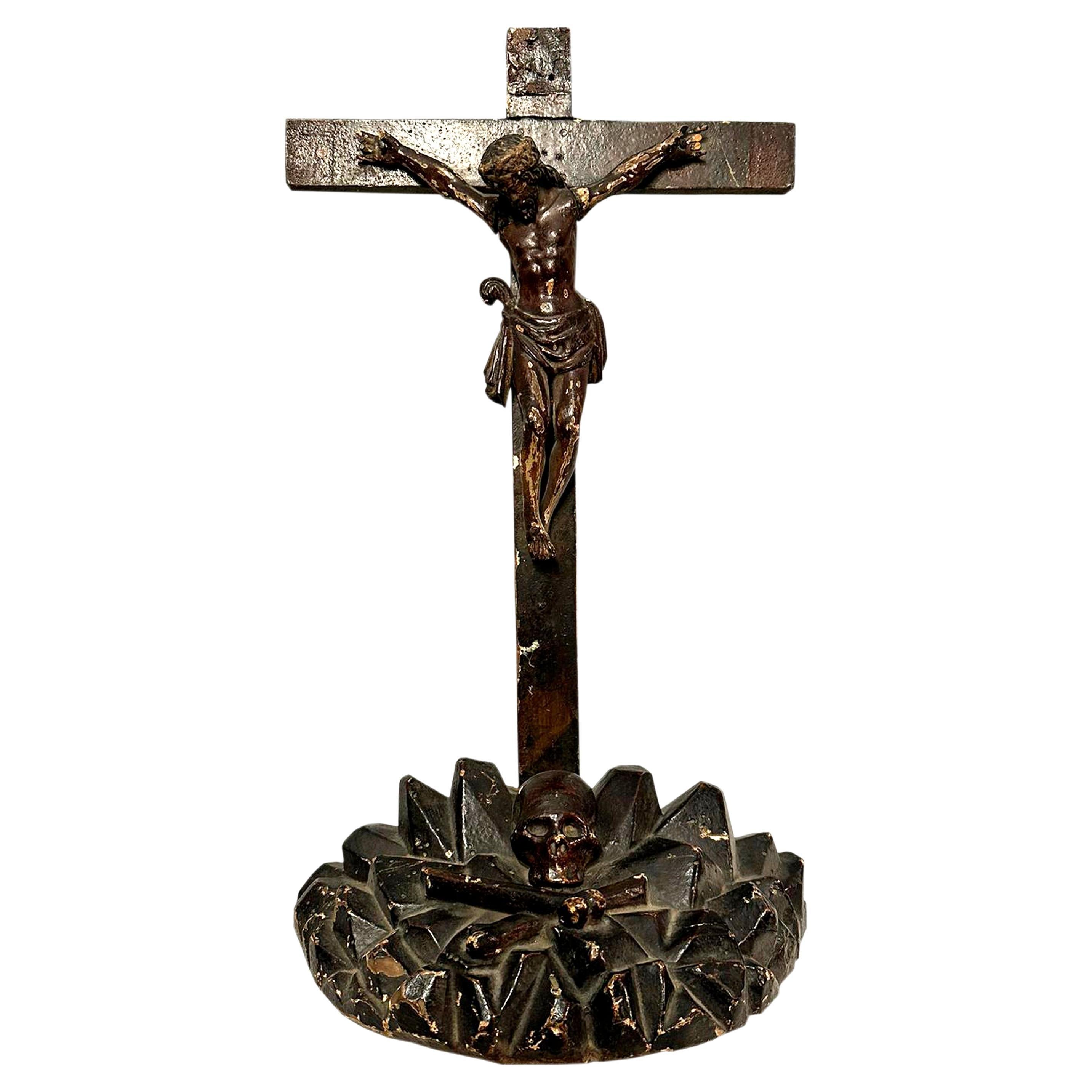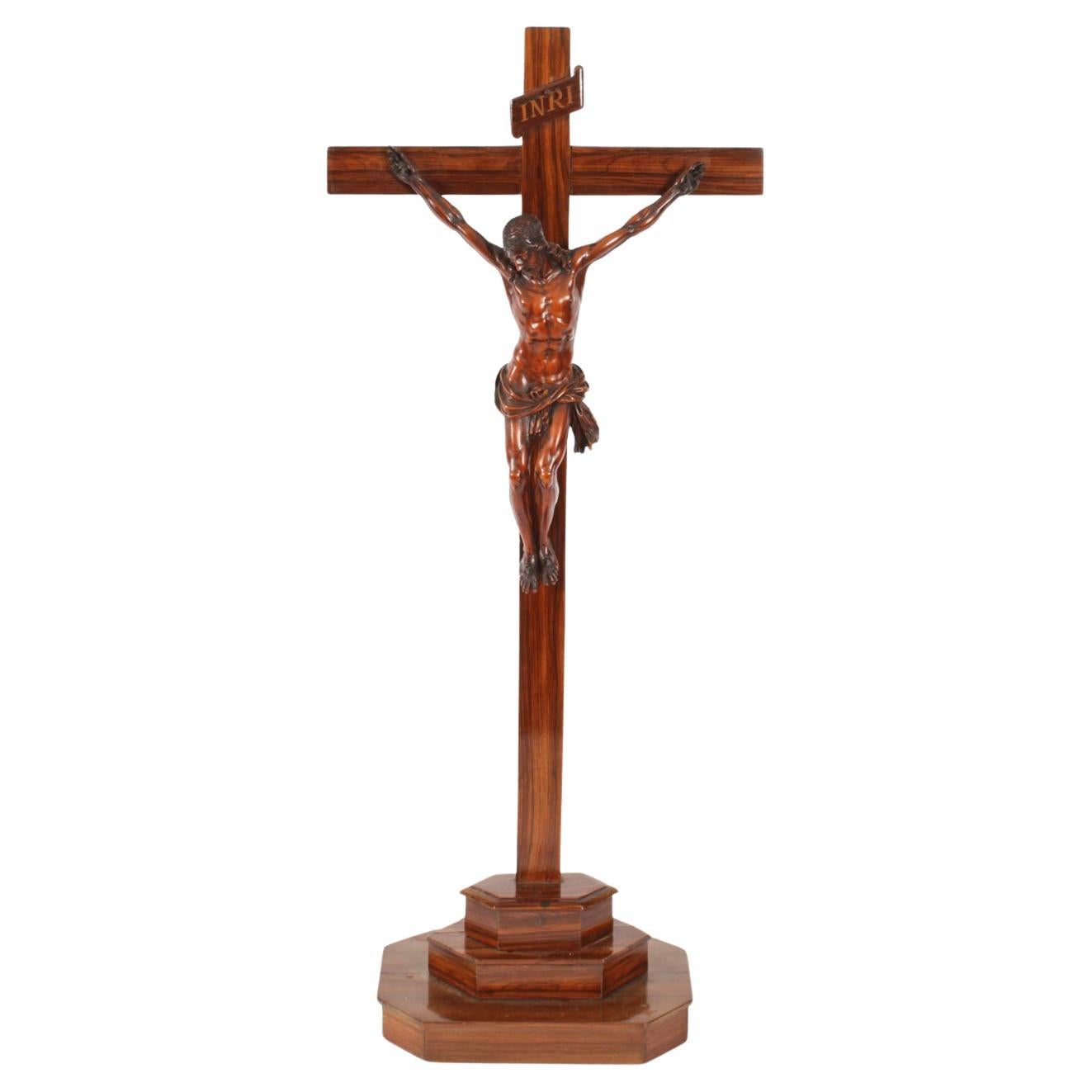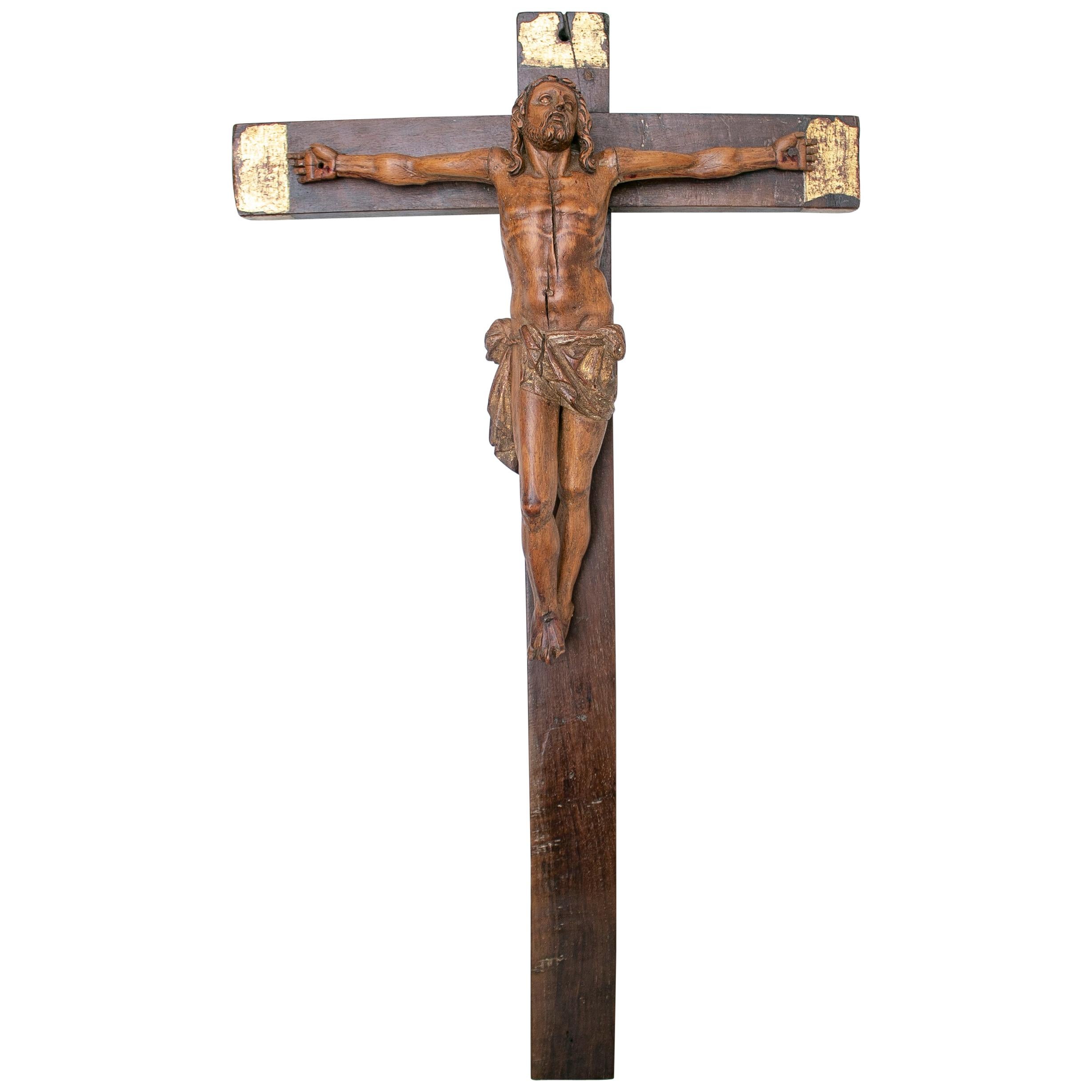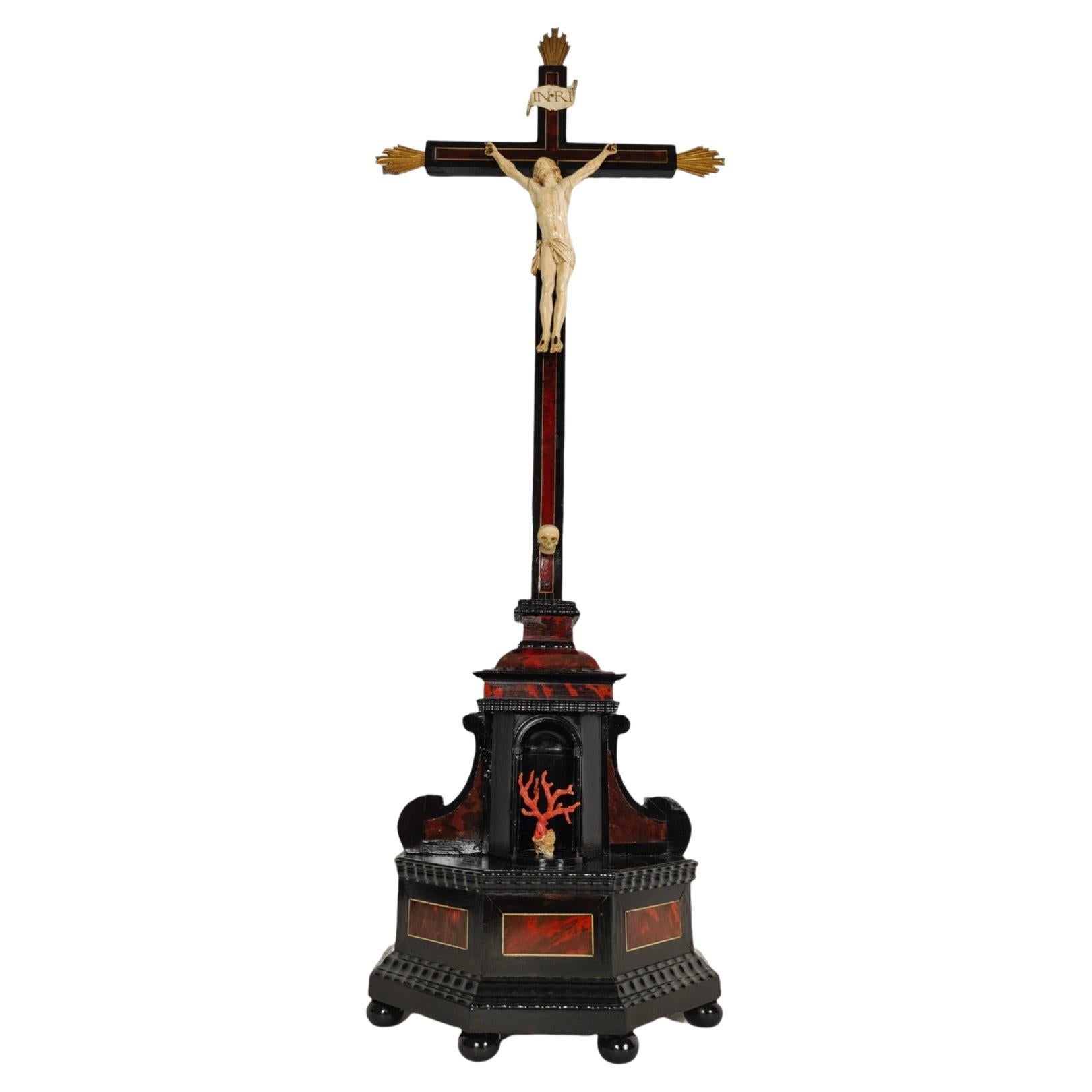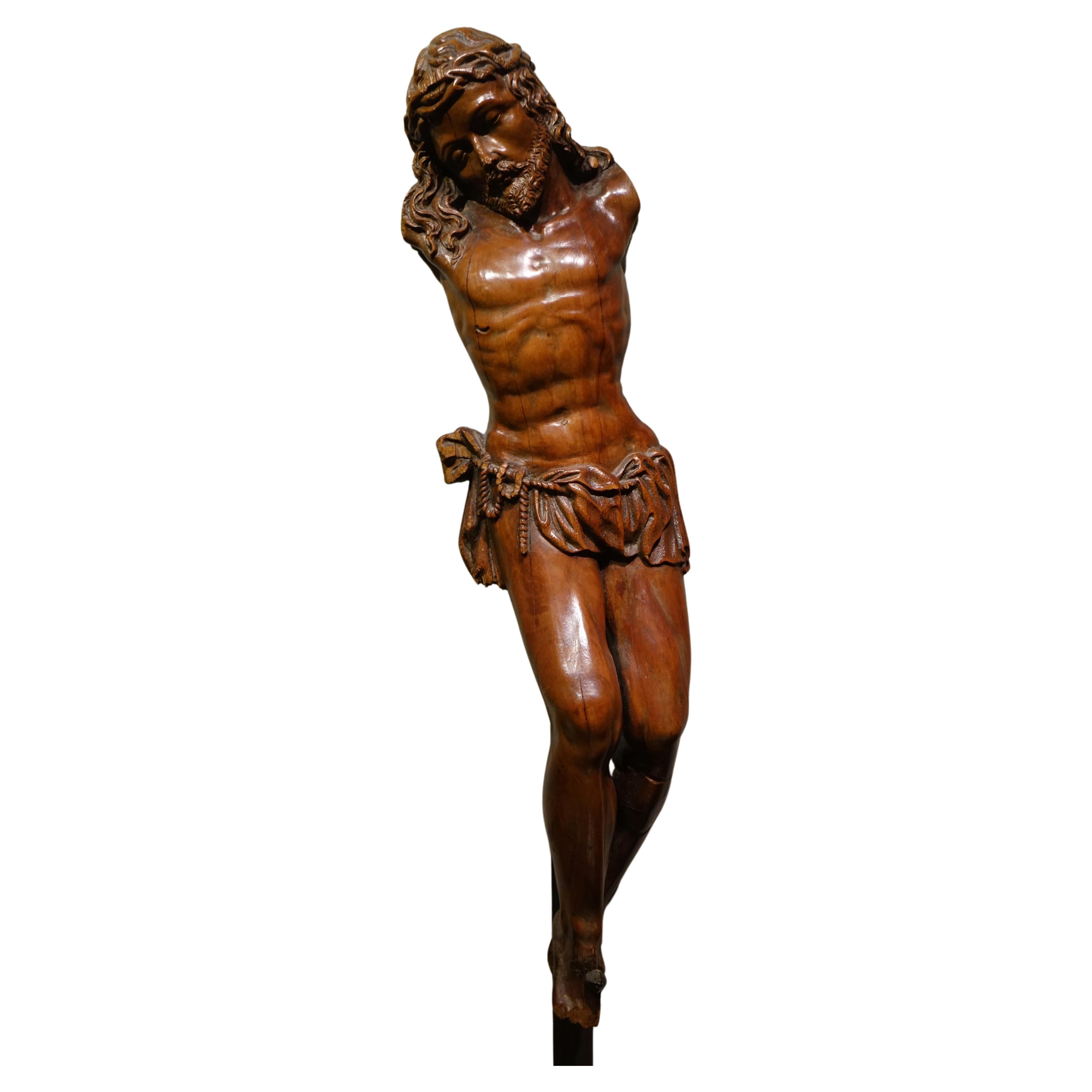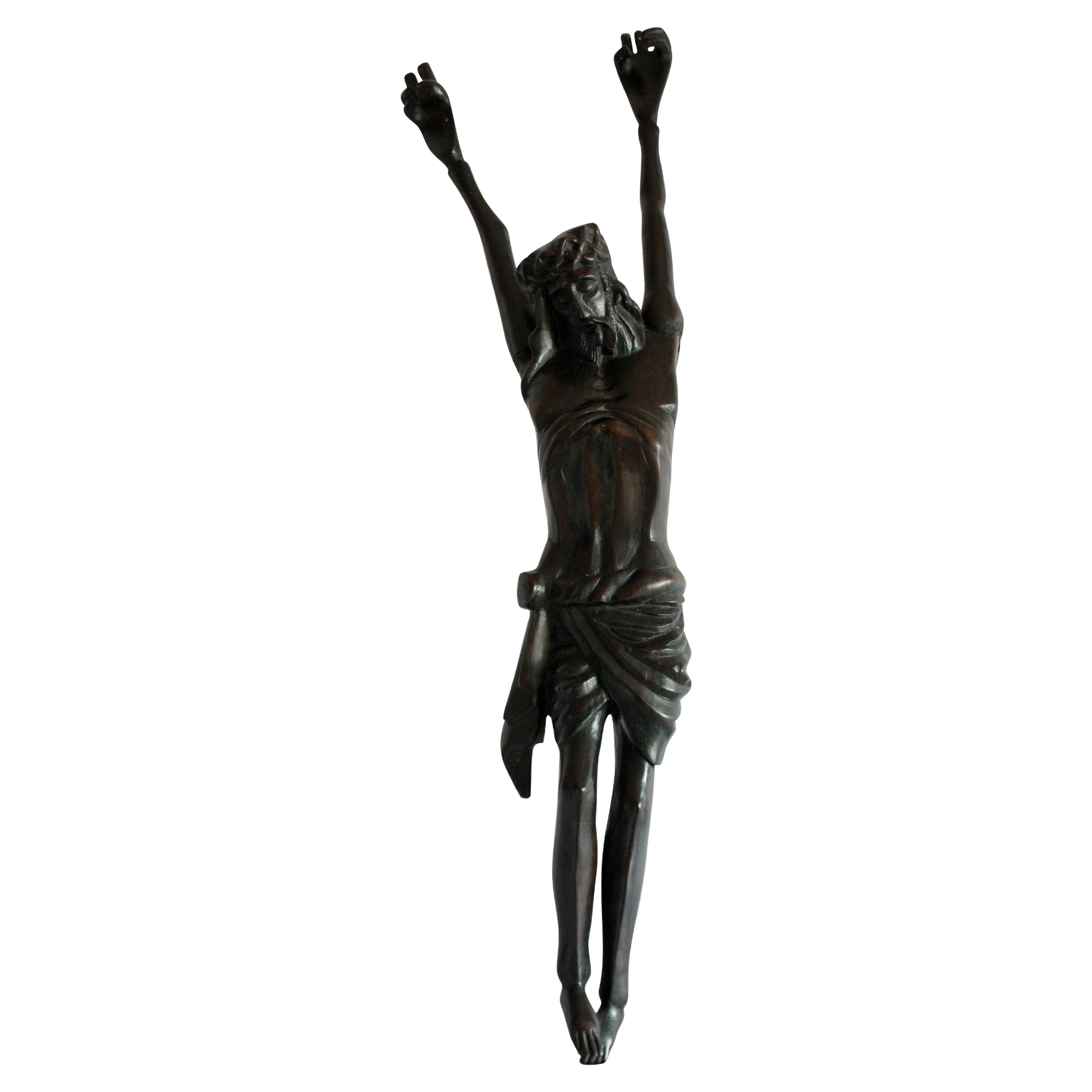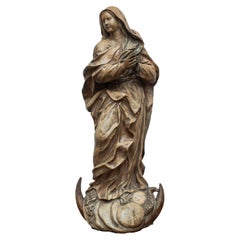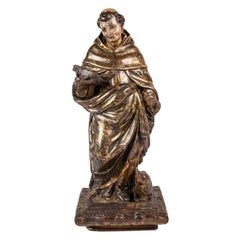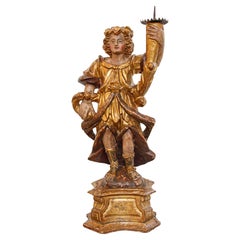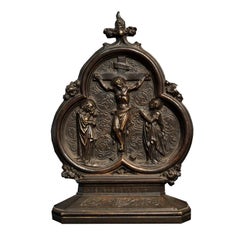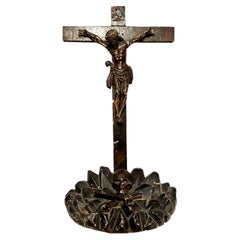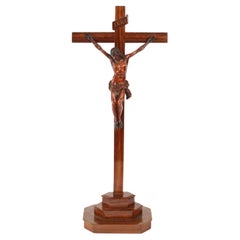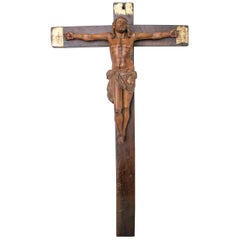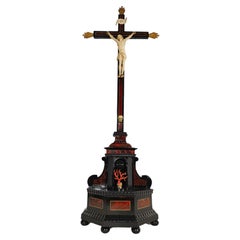Items Similar to 17th Century Cricifix Boxwood
Want more images or videos?
Request additional images or videos from the seller
1 of 8
17th Century Cricifix Boxwood
$2,149.85
£1,598.55
€1,800
CA$3,019.56
A$3,324.32
CHF 1,699.07
MX$39,676.61
NOK 21,632.73
SEK 20,243.41
DKK 13,713.85
About the Item
17th century
Crucifix
Measures: Boxwood, 42 cm high x 8 x 14
The sculpture depicting the crucified Christ examined here represents a refined example of seventeenth-century cabinetry in boxwood. The figure of Christ, now dead on the cross, is part of a precious artistic choreography with the structure of the cross and its pedestal, both decorated with tortoiseshell mirrors, ivory threads to emphasize the structure of the cross and elements in ebonized and carved wood to highlight the architectural structure of the pedestal.
The departure of Christ is evident from the lowered head, from the open hands in abandonment and the now limply hanging feet. The lower part of the torso, the abdomen, taut and contracted, seems to refer to the last breath exhaled, as well as the thong, a thin piece of fabric, is moved by an invisible breeze that ripples the fabric with those typical tangled draperies and folds of baroque art, made up of full and empty spaces.
- Dimensions:Height: 16.54 in (42 cm)Width: 5.52 in (14 cm)Depth: 3.15 in (8 cm)
- Materials and Techniques:
- Place of Origin:
- Period:
- Date of Manufacture:17th Century
- Condition:Wear consistent with age and use.
- Seller Location:Milan, IT
- Reference Number:1stDibs: LU5918226986812
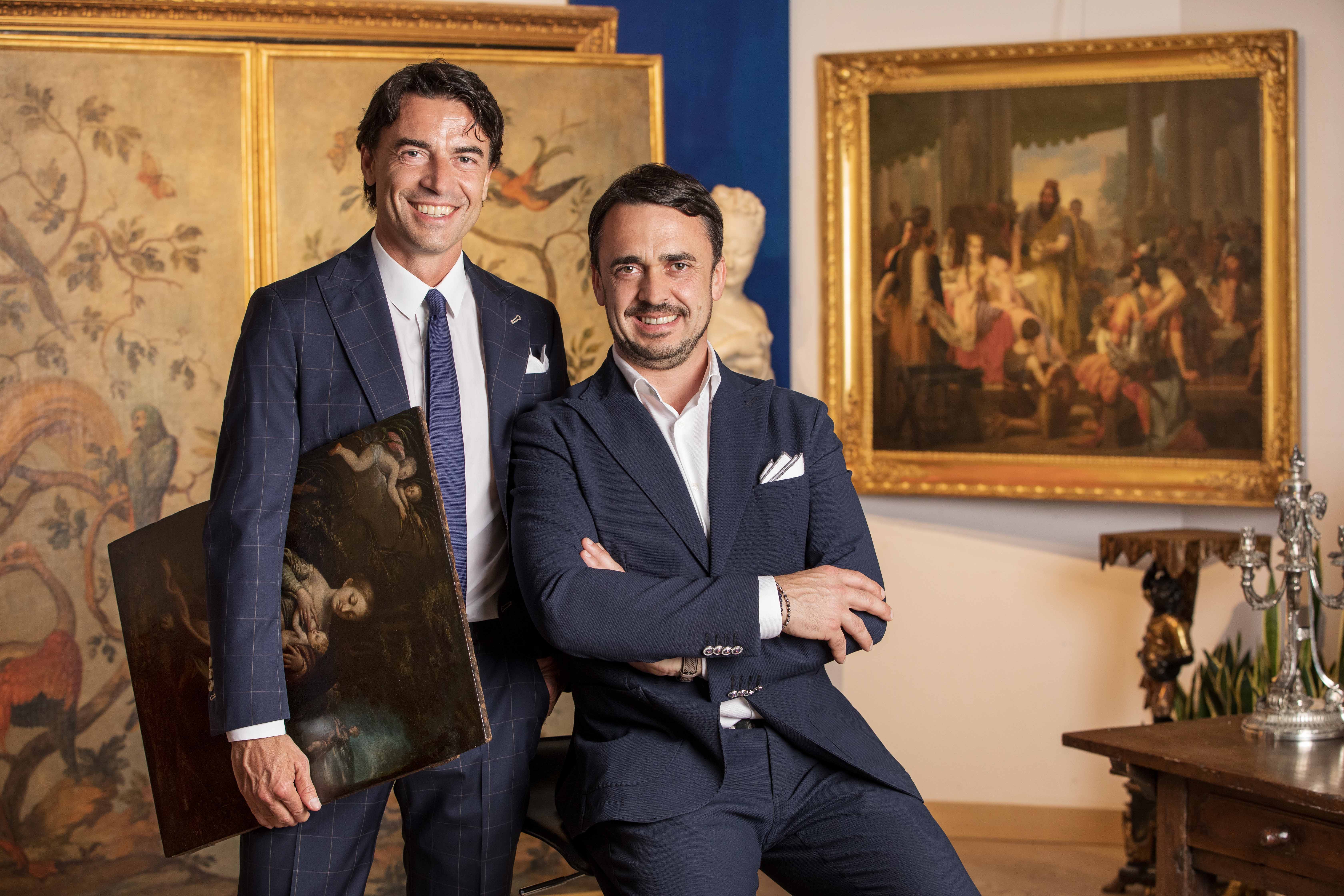
About the Seller
5.0
Vetted Professional Seller
Every seller passes strict standards for authenticity and reliability
Established in 2000
1stDibs seller since 2021
30 sales on 1stDibs
- ShippingRetrieving quote...Shipping from: Milan, Italy
- Return Policy
Authenticity Guarantee
In the unlikely event there’s an issue with an item’s authenticity, contact us within 1 year for a full refund. DetailsMoney-Back Guarantee
If your item is not as described, is damaged in transit, or does not arrive, contact us within 7 days for a full refund. Details24-Hour Cancellation
You have a 24-hour grace period in which to reconsider your purchase, with no questions asked.Vetted Professional Sellers
Our world-class sellers must adhere to strict standards for service and quality, maintaining the integrity of our listings.Price-Match Guarantee
If you find that a seller listed the same item for a lower price elsewhere, we’ll match it.Trusted Global Delivery
Our best-in-class carrier network provides specialized shipping options worldwide, including custom delivery.More From This Seller
View All18th Century Immaculate Madonna Terracotta Sculpture
Located in Milan, IT
18th century
Immaculate Madonna
Terracotta, 53 x 22 x 20 cm
The work examined depicts the Virgin Mary treated according to the iconography of the Immaculate Virgin
The theme of the Immaculate Conception began to appear in artistic works ever since the debate began, which saw the Franciscans and the ramifications of the Benedictine Order lined up on one side, linked to the thought of Anselmo d'Aosta and Bonaventura da Bagnoregio, and on the other the Dominicans, linked to the discussion offered by Thomas Aquinas...
Category
Antique 18th Century European Figurative Sculptures
Materials
Terracotta
18th Century Sant'antonio Abate Sculpture in Wood
Located in Milan, IT
18th Century
Sant’Antonio Abate
Wood, cm alt. 61
Base 25 x 17.5 cm
This wooden sculpture depicts Sant’Antoni Abate. Antonio was born in Come i...
Category
Antique 18th Century Italian Figurative Sculptures
Materials
Wood
17th century, Angels reccicero
Located in Milan, IT
XVII Century
Angels reccicero
(2), Gilded wood, am alt.62
Category
Antique 18th Century and Earlier Other Figurative Sculptures
Materials
Wood
Peace Depicting the Crucifixion in Dark Patina Bronze 18th Century
Located in Milan, IT
18th Century. Peace depicting the Crucifixion
Dark patina bronze, 21 x 14.5 cm
The bronze examined is an ancient peace (in Latin osculum pacis or table pacis), the object of th...
Category
Antique 18th Century Italian Religious Items
Materials
Bronze
18th century, Pair of angels
Located in Milan, IT
18th 18th Century
Pair of little angels
Polychrome wood, cm h 25
Category
Antique 18th Century and Earlier Italian Other Figurative Sculptures
Materials
Wood
$2,627 / set
Pair of candle-bearing angels, Carved and gilded wood, 18th century
Located in Milan, IT
18th 18th Century
Pair of candle-bearing angels
Carved and gilded wood, 28 x 71 cm
The item is in good condition
Category
Antique 18th Century Figurative Sculptures
Materials
Giltwood
You May Also Like
Hand-crafted Boxwood Calvary Sculpture. Spain, 17th century.
Located in Madrid, ES
Calvary hand-carved in boxwood.
Calvary is a traditional religious scene that shows Jesus crucified on top of Mount Golgotha.
Category
Antique 17th Century Spanish Baroque Figurative Sculptures
Materials
Wood, Boxwood
Antique 2ft French Box Wood Corpus Christi Olive Wood Cross & Base 17th Century
Located in London, GB
This is a distinctive antique French patinated boxwood altar Corpus Christi of Christ crucified on an olive wood cross, dating from the late 17th Century.
The details are very impressive, the Corpus Christi is very life-like, wearing a flowing linen cloth, his eyes closed and head upper-turned and raised on a stepped base.
The craftsmanship is second to none throughout all aspects of this magnificent altar Corpus Christi which is sure to add an unparalleled touch of sacred art to your home.
Condition:
In good condition. As an antique item, the piece shows signs of use commensurate with age, these minor condition issues are mentioned for accuracy and, as seen in the accompanying photographs, it displays beautifully.
Dimensions in cm:
Height 64 cm x Width 26 cm x Depth 13 cm
Dimensions in inches:
Height 2 feet, 1 inch x Width 10 inches x Depth 5 inches
The Christian cross, seen as a representation of the instrument of the crucifixion of Jesus, is the best-known symbol of Christianity. It is related to the crucifix (a cross that includes a corpus, usually a three-dimensional representation of Jesus' body) and to the more general family of cross symbols, the term cross itself being detached from the original specifically Christian meaning in modern English (as in many other western languages).
The basic forms of the cross are the Latin cross with unequal arms (✝) and the Greek cross (✚) with equal arms, besides numerous variants, partly with confessional significance, such as the tau cross...
Category
Antique Late 17th Century French Religious Items
Materials
Olive
17th Century Spanish Boxwood Christ on the Cross
Located in Marbella, ES
17th century Spanish boxwood Christ on the cross.
Category
Antique 17th Century Spanish Renaissance Religious Items
Materials
Boxwood
Large Cross with Christ from the 18th Century
Located in Madrid, ES
Large cross with christ from the 18th century. The cross is decorated with tortoise shell, ivory and ebony. The christ is sculpted in high quality ...
Category
Antique 18th Century Italian Baroque Figurative Sculptures
Materials
Wood
Christ in Boxwood, France, late 16th-early 17th century".
Located in PARIS, FR
Christ in Boxwood, France, late 16th-early 17th century
Beautiful corpse of Christ with missing arms.
He must have been on the Cross, arms in a horiz...
Category
Antique Early 17th Century French Renaissance Figurative Sculptures
Materials
Boxwood
Fine Indo-Portuguese Ebony Corpus
Located in Kent, Dover
A fine 18th century Indo-Portuguese corpus, carved out of solid ebony. In very good condition with a good patina.
Category
Antique Early 18th Century Indian Baroque Sculptures and Carvings
Materials
Ebony
More Ways To Browse
Christ On The Cross
Tortoiseshell Mirrors
Antique Pedestal Mirrors
Ivory Mirror Antique
Goldscheider Figurine
Lady Figurines
Medieval Knight
Oriental Sculpture
Putti Angels
Terracotta Molds
Allegorical Sculpture
Belgian Sculptor
Bronze Baby
Marble Cupid
Marble Statue Greek
Wood Buddhas
Antique Aurora
Art Deco Male Sculptures
